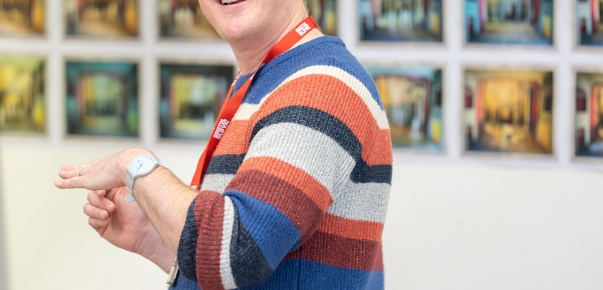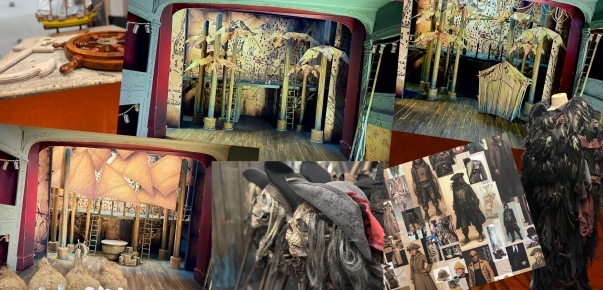Silva Semerciyan: Playwriting, a Performance Art
17 Apr 2014Silva Sermerciyan has been adapting Hans Christian Andersen’s The Tinderbox for the Bristol Old Vic Young Company which opens next week. Her radio play, Varanasi, was shortlisted for a BBC audio drama award in 2013 and has been part of the studio writers’ group at the Royal Court Theatre and will be on attachment to the National Theatre Studio later this year. We asked her what it has felt like writing for the Bristol Old Vic Young Company for their latest show.
[gallery type="rectangular" ids="176470762,176470724,176470723"]
First drafts are euphoric. They belong not to writers but conjurers. From nothing, there’s something; a void has been filled. Delivering the first draft of The Tinderbox to the Bristol Old Vic Young Company was exhilarating but also surprisingly unnerving. Firstly, because it’s a big cast. It requires the Bristol Old Vic’s biggest rehearsal space to accommodate the eighteen actors and creative team. Primarily, because if they hated it, I’d know. I’d see it in their faces, hear it in their voices. That’s the reason I’d wanted to write for the young company. It’s the same thing that makes their performances so thrilling: they’re 100% invested in every aspect of production. That hurdle past—they liked it fine—the next was the sense of deflation that always follows a first reading. Almost immediately, the certainties began to fade and the doubts began to nag. Was the play hanging together? What did that even mean?
The second draft is the time that I feel uninitiated, under-read and in all honesty, un-writerly. If Arthur Miller was right when he said that plays are a species of jurisprudence, where did that leave the ambivalent writer? Just how good was my judgement anyway? My cheeks blazed as I began to discover the breaches in logic, the loose ends, the red herrings, the typos. I knew I must be prepared to make seismic shifts to the structure, raze characters, change locations, jettison favourite scenes, and all this, knowing full well that even the smallest alteration could be like setting off a device that would send shrapnel flying throughout the script.
When I was younger, I played the piano. I played tolerably at home but worse in public. I disliked performing. I resented all those eyes boring down on my hands and their silent expectation of a note-perfect performance. Writing seemed a better option. It was a ponderous art form, the pace of expression dictated solely by me and the piece. No one need ever see the clumsy blather that might eventually be pared down to a single graceful aphorism. With The Tinderbox, how surprising it was to find myself having to respond quickly for a particular group at a particular time in a particular space. I had to get it right and fast. Without a final draft, the cast might rehearse material that would eventually be cut. A single word could alter a character to the point that any previous discussion of motivation might prove defunct. All my mistakes were on show: jokes that fell flat, cringeworthy declarations, over-long exchanges of dialogue, fanciful stage directions. Essentially, I had to share the blather before it had become the aphorism.
In the lead up to a production, playwriting becomes a performance art. It isn’t about how good the text can be, but how good it can be now. Like any performer, the ego dissolves, the body eclipses the mind, and people are watching. My first play took the best part of seven years to write. Between the first draft of The Tinderbox and the first performance on 23 April, it will have been seven weeks. The tweaks are still ongoing, to the point that the phrase ‘final draft’ is dubious. More useful to let go of conventional tags and instead keep evaluating and evaluating the script on its course to the stage. The actors are drilling their lines, why not me? They’re finding possibilities in the text; I should keep looking, too. The results are proving all the better for this continual awareness of audience and their silent expectation of a word-perfect show. So once again, I’m learning to perform. Maybe not like Glenn Gould, but this time, I’m enjoying it.
The Tinderbox is showing at Bristol Old Vic Studio from 23-26 Apr. Tickets and information here.
Photography by Catherine Vaughton and Patrick Graham

